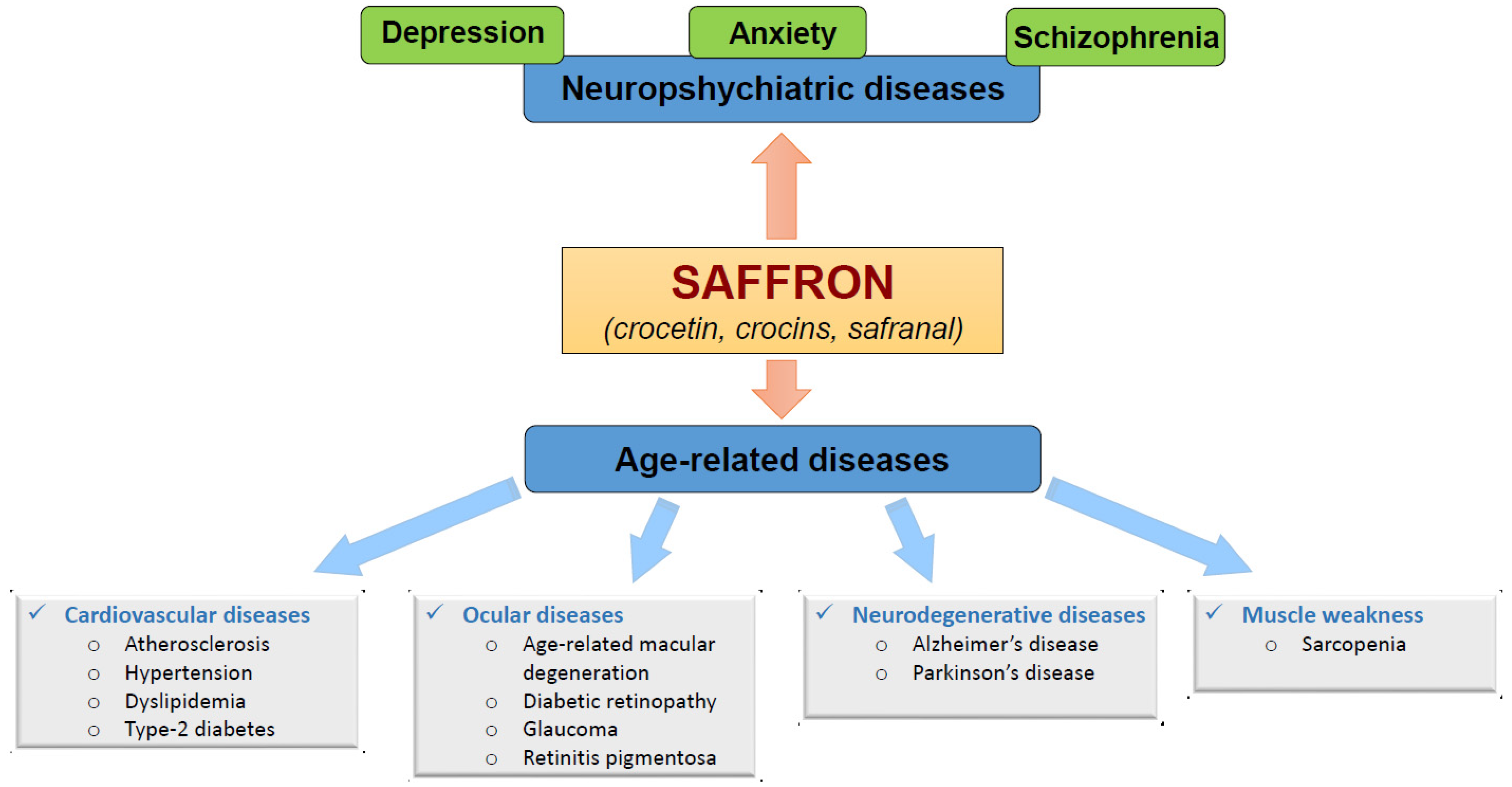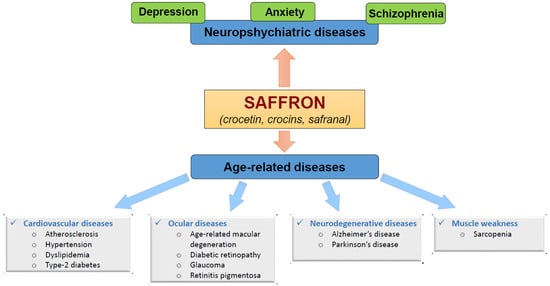Muscle weakness is generally defined as a temporary or permanent loss of muscle strength. Under its more severe form, it is defined as sarcopenia
[87][139]. It is usually due to a lack of exercise, muscle injury, pregnancy or aging. It can also occur with long-term conditions, such as diabetes or heart disease. The effect of saffron in the management of muscle weakness has been described. In this context, the effect of saffron on physical performance in 28 healthy men has been studied. This
enst
rudy indicated that saffron supplementation (300 mg/day or 10 days) increased muscle strength and improved reaction time. Results indicated that saffron treatment improved mitochondrial function as well as blood flow and oxygen delivery to the muscles during exercise
[88][140]. Previous studies have suggested that saffron contains two beneficial carotenoids called crocin(s) and
crocetin [89][141], which are associated with the prevention of muscle fatigue and weakness. On this basis, Lei et al. indicated that
crocins relieve pain and muscle suffering in osteoarthritis rats triggered by MNX surgery
[90][142]. They also showed that
crocins can reduce oxidative stress and inflammation induced by osteoarthritis. Oxidative stress may be involved in the pathogenesis of muscle dysfunction and inflammation. Indeed, ROS oxidize various components of the cell and can lead to cellular injury and even cell death
[91][143]. The result of these disturbances is a cellular dysfunction leading to inflammatory disorders
[92][144]. The elevation of ROS production and alteration of antioxidant enzyme systems leads to muscle loss and weakness
[93][145].
Crocins treatment attenuated oxidative stress and improved the muscle strength. It has been reported that
crocins can increase the activities of GSH reductase and gamma-glutamyl cysteine synthetase (gamma-GCS); hence, it can contribute to a stable GSH
[94][90][43,142]. Moreover, it has been shown that
crocins have an important relaxing effect on rat tracheal smooth muscle cells
[95][146].
Crocetin was also found to effectively treat and prevent physical fatigue in men
[96][147].


